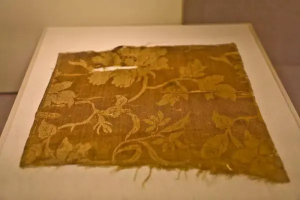Classification of China Silk Textiles
Silks and satins are the general name for silk fabrics in daily life, and are not a complete classification method. The types of silk fabrics in ancient China include silk, yarn, yee, twill, silk, brocade, satin, silk and so on. Today, according to the organization structure, technology, appearance and use, silk is divided into yarn, silk, twill, silk, silk, gauze, crepe, brocade, satin, old, cotton, velvet, silk 14 categories.
Yarn: plain or false yarn organization, light texture, showing perforated silk fabric.
Lo: the use of warp organization, so that the warp formed obviously twisted silk fabric, to form pepper shape Hank pores.
Twill: twill (or textured twill) fabric with twill, divided into plain and twill.
Silk: ancient common name for a compact, light, fine, flat plain silk fabric.
Spinning: all thin monochromatic silk fabrics.
Brocade: colorful jacquard cooked silk fabric.
Satin: Since the creation of weft brocade in the early Tang Dynasty in China, the weave of has changed from plain warp double-sided organization to warp twill above-ground weft twill. has a bright and smooth appearance. is a super rich and beautiful high-grade silk fabric.
Ti: It’s a thick silk fabric.
Ge: a rough silk fabric.
A heavy silk fabric.
Cashmere: regardless of the flower department, ground organization, other categories are based on the ground organization.
Silk: since the Ming and Qing dynasties has become a general name for silk goods, and the satin effect is associated with the general name of silk fabrics — satin.
Gauze: plain weave weave or other weave, warp and weft twisting process, fabric showing wrinkle effect of silk fabrics.
Crepe: plain weave or other fabric, fabric showing the wrinkle effect of silk, with two-way wrinkles, soft luster, feel elastic, anti-crepe effect.

In fact, no matter what kind of silk, no matter what the name, their raw materials are silk, but the weaving method is different, the organization is different, to form different silk varieties. It can be said that fabric organization is the most important factor in determining the variety of silk. The original meaning of the word “organization” is actually related to silk textiles.
On the loom vertical is the warp line, transverse is the weft line, the warp line and the weft line form a vertical system, according to a certain law interwoven together, will form a fabric, the warp line and the weft interwoven law is the organization.
In the long history of Chinese silk, silks, satins and other silk varieties have very strong characteristics of The Times. For example, twill is a type of silk with a twill pattern. This fabric has dark flowers and reflects understated luxury. Satin was still very popular after the Tang Dynasty, especially in the Song and Yuan dynasties. However, in the Ming and Qing dynasties, twill was mostly used for mounting paintings and calligraphy. Luo has appeared in the Shang Dynasty, in the Tang Dynasty, Zhejiang Yue Luo and Sichuan monofilaments are very famous. Where the monofilament appears from the surface to have evenly distributed holes – later called yarn. The holes are airy, comfortable and cool to wear, suitable for summer clothing, embroidery blanks and ornaments. In the Song Dynasty, the light and transparent Luo became the new favorite of the market, when there was a kind of “if nothing, cut clothes, really if smoke” gauze fabric, is the fashion talent to chase high-grade silk.
Among the silk artifacts unearthed all over the country, the more famous are the Han Dynasty brocade arm guard of “Five Stars out of the East and China” unearthed in the Hetian area of Xinjiang and the plain yarn jackets unearthed in the Han tomb of Mawangdui. Han Dynasty brocade is a tapestry of different colors of warp flowers, “five star brocade” is in 5 colors of warp alternate display pattern, its warp density of more than 200 per centimeter. The organization structure of the plain yarn yarn fabric is relatively simple, plain yarn, but the silk thread used is very thin, the whole garment is very light, and the finer silk thread is specially selected in the silk making, even back to the choice of silkworm seed, and the rearing of the cocoon. In the Ming and Qing dynasties, textile cultural relics were widely distributed and varied, and the silk varieties were the most complex. Whether it was silk making process or weaving process, it had reached the peak of traditional textile technology in this period.
China has made important progress in the field of silk reeling technology. For example, the use of automation equipment and intelligent control systems to improve production efficiency and improve fabric quality. In addition, the ap